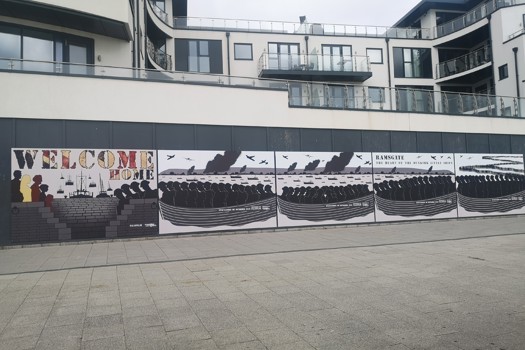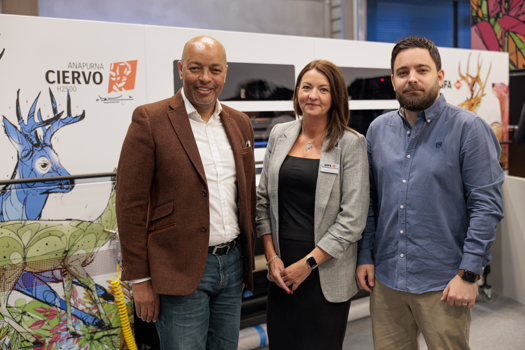It is one of the fastest growing technologies in the world at the moment, with eight of the top 10 smartphones now shipping with it as standard, It is set to change the way out-of-home (OOH) advertising works forever. It is bringing online digital content to printed items, including everything from books and magazines to packaging. Yet say the words ‘near-field communication’ (NFC) to people and not many have any idea what you’re talking about.
This is going to change. NFC is going to become ubiquitous in both the way brands interact with consumers and to how we pay for goods. Already, it has been adopted by the likes of McDonalds and M&S for small purchase payments at some sites, and this year has seen it rapidly enter the marketing sphere. So if you don’t fully understand the capability, you better learn fast.
NFC is similar to RFID, in that it is a microchip that uses radio frequency to connect to a ‘passive’ device – in NFC’s case, this is usually an NFC-enabled smartphone, but Sony has launched computers, headsets and portable speakers all NFC enabled too. The distance an NFC chip can transmit to is much shorter than RFID, generally a mere few centimetres. More often than not, direct contact has to be made between receiving device and NFC hub. Once connection is made, data can be transferred.
"The normal user experience would be using a smartphone and would be as follows," explains Giancarlo Cutrignelli, global product marketing manager for Tags and Labels at NXP, which manufactures NFC chips. "First, you have to unlock the NFC capability of the phone. For security reasons and for power usage, you would not want NFC connectivity running all the time. You would then need to place the phone within one or two inches of the chip, or you can tap the reader space. There will usually be a URL stored in the chip and your browser will load that URL and take you to content or prompt a download. It’s as easy as that."
Cutrignelli says that in 2011, there were 45m NFC-enabled phones globally and in 2012 that is projected to be 100m. He says the adoption rate is increasing to the point where research suggests 50% of smartphones would be NFC-enabled by 2015.
Smart operation
Whether that will include the all important iPhone, however, is debatable. Some commentators have said that without the seemingly ubiquitous Apple product’s endorsement, the technology will struggle to gain traction. Dan Worth, news editor at IT industry trade magazine V3.co.uk, says that view does not really reflect the reality of how prevalent NFC has become, nor the nature of the way Apple does business.
"Obviously, it is notable that Apple has not incorporated the technology, but Apple tends to hold things back and we may find that with the next iPhone they will be shouting about having NFC and the rest of the market will be saying ‘Well, we have it already’," he explains. "The main rival to the iPhone, the Galaxy S3, does have NFC capability, and most of the other major smartphones do as well. So it is going to be difficult for Apple to ignore it and I believe it will take it up sooner rather than later."
So the technology is there and the penetration of it is only likely to go up. That means the market has to be ready to capitalise and Cutrignelli says it can do so in a number of ways.
The highest profile application for NFC so far has not been print-based. Rather it has been tap payment on certain credit cards (Visa being the main one) and through phones. However, print applications are catching up fast.
"One of the big applications is OOH advertising," reveals Cutrignelli. "So you have a tag in say, a bus shelter poster, and accessing that tag will give you content relating to the ad printed there. Other applications include publishing. For Condé Nast’s Wired last year, we launched an edition with an NFC tag connected to a Lexus ad, and we also recently announced an NFC-enabled book called Catch The Sun, which is about ballooning."
Phil Coote, chief executive of Rapid NFC, which supplies NFC products to the international market, adds that he has also supplied tags for point-of-sale displays, beer mats, wrist bands, key fobs, stickers and even some for use in surfboards. Clearly, then, they are hardy little chips.
"Generally, the chip is very robust," he explains. "It is important for the right tag to be used for the right situation. We check all tags we produce. We have done very, very large runs and have seen very, very small failure rates."
Cutrignelli adds that the chip itself can be changed to suit the application: "The average chip is in the range of 100 microns thick, it can be up to 120 micron or down as low as 75 micron depending on the end application."
Coote says he supplies products in runs as short as 10 or in the tens of thousands. And the chip can be supplied in a number of ways to suit the end application; it can be laminated into a product, and so be hidden, put in a sticker so it is more obvious, or even left naked so people can see the technology itself. The process is generally done by the printer of the print product using standard, existing practices, so the costs are not excessive. He adds that the average printer would have no problem installing NFC chips.
As Cutrignelli mentions above, it is in OOH advertising where many believe printers will have to get used to using NFC chips. The reason for that is because this year the OOH market has embraced NFC wholeheartedly. A key driver has been a trial conducted by JCDecaux in March to see how the NFC technology works for OOH in practice. The company partnered with agency buyer Kinetic and recruited 13 advertisers including Morrisons, Mercedes, Unilever and H&M to take part. They chose Reading as the test site.
"We chose Reading because it has a decent population size of 150,000 and quite a lot of tech companies are there," reveals David McEvoy, marketing director at JCDecaux. "Penetration of mobile phones was also good, and there was a young population. So it was perfect to test whether NFC would work with posters."
Test sites
More than 300 bus shelter and shopping centre sites were chosen for the test, and the chips were incorporated into the poster frames rather than the poster itself for ease of use. There were two weeks of ‘education’ in the form of posters explaining what was going to happen and then the trial ran live for four weeks throughout March.
"The copy changed every week," says McEvoy. "For Morrisons, this took the form of a different offer on the poster each week, which corresponded to a different voucher you could download by using the NFC chip. If you tapped on the Mercedes poster, you got a video of the new car and could enter a competition to win a racing day. For Unilever, we had a Lynx advert whereby you were channelled through to content you could ‘like’ on Facebook, bringing in social media."
The results were better than any of partners expected. More than 3,000 people used the NFC points, and 78% said it was a positive experience, 87% said they would repeat the experience and 80% of non-NFC users questioned said they would like to try NFC in the future having seen people try it. As for downloads, 28% of people downloaded video content and 48% downloaded news or unique content.
"The Reading trial gave us the perfect opportunity to experience a way of opening conversations with our consumers and we’re pleased that the results proved to be so positive," says Richard Brooke, communications buying manager at Unilever. "The four-week trial showed that we can successfully combine the OOH channel with mobile technology to create a rich and deeper engagement with our consumers."
The data that can be accumulated from the use of the chips is also important. McEvoy explains that the trial enabled the partners to see the most popular times people scanned, which days and when, and also which geographic locations were best.
Martin Ison, director at Ringotag, another NFC products supplier, says even more data than that can be harvested: "Statistics, such as mobile phone type, can also be revealed, so the client can integrate the information with their sales strategy."
Since the trial, both Kit Kat and Sony have run national NFC campaigns and McEvoy says there will be many more to follow. "It is so easy for the consumer, there are so few barriers, and the experience gained is very positive," he says.
V3.co.uk’s Worth agrees: "It makes sense as a technology – you carry your smartphone around all day and so connecting with that device is a great way in for brands," he says. "Where the QR code failed, because you had to load an app and scan something that was infringing on the artwork of the ad, NFC is seamless, does not claim any ad real estate, it’s quick and it is here to stay."
After so many years of waiting, then, it may well be that print has found a reliable and cost-effective way of connecting with digital content. Knowledge of the technology currently is still lacking on both the consumer and the marketing side, but with penetration of NFC-enabled devices increasing and brands already getting on board, obtaining that knowledge as soon as possible will be essential for anyone involved in the marketing profession and its suppliers, such as printers.
"It is a slow curve upwards, and it means people may not realise now how ubiquitous it will become, but in five years, everyone will be using NFC and so it is important for marketers and their suppliers such as printers to seize the initiative now," says Worth.









